trans-Caryophyllene

trans-Caryophyllene structure
|
Common Name | trans-Caryophyllene | ||
|---|---|---|---|---|
| CAS Number | 87-44-5 | Molecular Weight | 204.351 | |
| Density | 0.9±0.1 g/cm3 | Boiling Point | 268.4±10.0 °C at 760 mmHg | |
| Molecular Formula | C15H24 | Melting Point | N/A | |
| MSDS | Chinese USA | Flash Point | 104.9±13.8 °C | |
Use of trans-Caryophylleneβ-Caryophyllene is a CB2 receptor agonist. |
| Name | (-)-β-caryophyllene |
|---|---|
| Synonym | More Synonyms |
| Description | β-Caryophyllene is a CB2 receptor agonist. |
|---|---|
| Related Catalog | |
| Target |
CB2 receptor[1] |
| In Vitro | Among the tested cancer cells, β-Caryophyllene demonstrates selective anti-proliferative effect against three cancer cell lines, namely HCT 116 (colon cancer, IC50=19 μM), PANC-1 (pancreatic cancer, IC50=27 μM), and HT29 (colon cancer, IC50=63 μM) cells, whereas β-Caryophyllene exhibits either moderate or poor cytotoxic effects against ME-180, PC3, K562 and MCF-7. Results show that β-Caryophyllene possesses higher selectivity towards the colorectal cancer cells (HCT 116), with selectivity index (SI)=27.9, followed by PANC-1 and HT 29 cells with SI=19.6 and 8, respectively. The apoptotic index estimated for β-Caryophyllene treatment on HCT 116 cells after 24 h treatment is 64±0.04. β-Caryophyllene at 10 μM concentration, causes significant nuclei condensation after 6 h of treatment. β-caryophyllene exhibits a dose and time-dependent inhibitory effect on the motility of HCT 116 cells[2]. |
| In Vivo | Treatment with β-Caryophyllene at different doses does not show any effects on swimming speed during the test. Oral treatment with β-Caryophyllene ameliorates the rise in β-amyloid deposition in the transgenic mice in a roughly dose-dependent manner, and the two higher doses exhibit almost equal effects in modifying the β-amyloid burden. The number of activated astroglial cells is higher in vehicle-treated mouse brains than in β-Caryophyllene-treated mouse brains with different doses. β-Caryophyllene is effective at reducing the enhancement of the COX-2 protein level found in vehicle-treated APP/PS1 mice[1]. Animals treated with β-Caryophyllene display higher values of object recognition index than their vehicle-treated counterparts [t(14)=4.204, P<0.05]. The total time spent in object exploration during the test trial is not significantly different between β-Caryophyllene-treated and vehicle-treated animals (t(14)=0.5874, P>0.05). Treatment with β-Caryophyllene does not significantly alter these seizure-induced neurochemical changes[3]. |
| Cell Assay | Panel of human cancer cells such as, pancreatic (PANC-1), colorectal (HCT-116 and HT-29), invasive squamous cell carcinoma (ME-180), leukemia (K562), hormone sensitive and invasive breast cancer cell line (MCF-7), and prostatic (PC3) adenocarcinoma cell lines are used. Cells are incubated in a humidified CO2 incubator at 37°C supplied with 5% CO2. Inhibitory effect of β-Caryophyllene on proliferation of the cell lines is tested using the MTT assay. The selectivity index (SI) for the cytotoxicity of β-Caryophyllene is calculated using the ratio of IC50 of β-Caryophyllene on a normal cell line (NIH-3T3) to the IC50 of β-Caryophyllene on cancer cell lines[2]. |
| Animal Admin | Male double transgenic APP/PS1 mice and wild-type littermates are used. The mice are group housed (3 to 5 animals/cage) with a 12:12-hour light/dark cycle and ad libitum access to food and water. In this experiment, animals are orally treated by gavage with 16, 48, or 144 mg/kg of β-Caryophyllene every morning for 10 weeks starting at the age of 7 months. All vehicle solutions are used for the respective control animal treatments and the Morris water maze test is performed[1]. |
| References |
| Density | 0.9±0.1 g/cm3 |
|---|---|
| Boiling Point | 268.4±10.0 °C at 760 mmHg |
| Molecular Formula | C15H24 |
| Molecular Weight | 204.351 |
| Flash Point | 104.9±13.8 °C |
| Exact Mass | 204.187805 |
| LogP | 6.78 |
| Vapour Pressure | 0.0±0.3 mmHg at 25°C |
| Index of Refraction | 1.495 |
CHEMICAL IDENTIFICATION
HEALTH HAZARD DATAACUTE TOXICITY DATA
|
|
~80% 
trans-Caryophyllene CAS#:87-44-5 |
| Literature: Larionov, Oleg V.; Corey Journal of the American Chemical Society, 2008 , vol. 130, # 10 p. 2954 - 2955 |
|
~10% 
trans-Caryophyllene CAS#:87-44-5 |
| Literature: Peppard, Terence L.; Sharpe, F. Richard; Elvidge, John A. Journal of the Chemical Society, Perkin Transactions 1: Organic and Bio-Organic Chemistry (1972-1999), 1980 , p. 311 - 313 |
|
~% 
trans-Caryophyllene CAS#:87-44-5
Detail
|
| Literature: Journal of Organic Chemistry USSR (English Translation), , vol. 25, # 1.2 p. 109 - 118 Zhurnal Organicheskoi Khimii, , vol. 25, # 1 p. 122 - 132 |
|
~% 
trans-Caryophyllene CAS#:87-44-5 |
| Literature: Journal of Organic Chemistry USSR (English Translation), , vol. 26, # 10.2 p. 1839 - 1852 Zhurnal Organicheskoi Khimii, , vol. 26, # 10 p. 2129 - 2145 |
|
~% 
trans-Caryophyllene CAS#:87-44-5
Detail
|
| Literature: Journal of Organic Chemistry USSR (English Translation), , vol. 26, # 10.2 p. 1839 - 1852 Zhurnal Organicheskoi Khimii, , vol. 26, # 10 p. 2129 - 2145 |
| Precursor 3 | |
|---|---|
| DownStream 10 | |
| HS Code | 2902199090 |
|---|---|
| Summary | 2902199090 other cyclanes, cyclenes and cyclotherpenes。Supervision conditions:None。VAT:17.0%。Tax rebate rate:9.0%。MFN tariff:2.0%。General tariff:30.0% |
|
Chemical composition, antioxidant, and antimicrobial activities of essential oil from pine needle (Cedrus deodara).
J. Food Sci. 77(7) , C824-9, (2012) The chemical composition of essential oil from pine needles (Cedrus deodara) was determined, and its antioxidant and antimicrobial activities were evaluated. Twenty-three components, representing 95.7... |
|
|
Chemical diversity among the essential oils of wild populations of Stachys lavandulifolia VAHL (Lamiaceae) from Iran.
Chem. Biodivers. 10(2) , 262-73, (2013) The variation of the essential-oil composition among ten wild populations of Stachys lavandulifolia VAHL (Lamiaceae), collected from different geographical regions of Iran, was assessed by GC-FID and ... |
|
|
Chemical composition and biological activities of soldiers of the Brazilian termite species, Nasutitermes macrocephalus (Isoptera: Natutitermitinae).
Nat. Prod. Commun. 8(1) , 69-74, (2013) The defensive secretion of the frontal gland from termite soldiers is a mixture of monoterpenes, sesquiterpenes and diterpenes, the latter being the most representative. Analyses of the dichloromethan... |
| [1R-(1R*,4E,9S*)]-4,11,11-Trimethyl-8-methylenebicyclo[7.2.0]undec-4-ene |
| Bicyclo(7.2.0)undec-4-ene, 4,11,11-trimethyl-8-methylene-, (1R,4E,9S)- |
| trans-Caryophyllene |
| β-caryophyllene |
| MFCD00075925 |
| (-)-trans-Caryophyllene |
| (1R,9S)-4,11,11-Trimethyl-8-methylenebicyclo[7.2.0]undec-4-ene |
| Caryophyllene (VAN) |
| (1R,4E,9S)-4,11,11-trimethyl-8-methylidenebicyclo[7.2.0]undec-4-ene |
| EINECS 201-746-1 |
| l-Caryophyllene |
| (-)-beta-caryophyllene |
| (-)-Caryophyllene |
| β-(E)-Caryophyllene |
| Bicyclo[7.2.0]undec-4-ene, 4,11,11-trimethyl-8-methylene-, (1R,9S)- |
| Bicyclo(7.2.0)undec-4-ene, 8-methylene-4,11,11-trimethyl-, (E)-(1R,9S)-(-)- |
| Bicyclo[7.2.0]undec-4-ene, 8-methylene-4,11,11-trimethyl-, (E)-(1R,9S)-(-)- |
| Caryophyllene |
| (E)-Caryophyllene |
![(1S,9R)-6,10,10-trimethylbicyclo[7.2.0]undec-(5E)-en-2-one structure](https://image.chemsrc.com/caspic/456/60362-44-9.png)


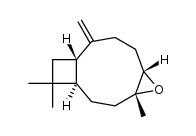


![(1R,3Z,9S)-4,11,11-trimethyl-8-methylenebicyclo[7.2.0]undeca-3-ene structure](https://image.chemsrc.com/caspic/383/136296-35-0.png)
![10,10-dimethyl-2,6-dimethylenebicyclo[7.2.0]undecane structure](https://image.chemsrc.com/caspic/269/136296-38-3.png)

![(1alpha,2alpha,5beta,8beta)-4,4,8-trimethyltricyclo[6.3.1.02,5]dodecan-1-ol structure](https://image.chemsrc.com/caspic/248/58404-89-0.png) CAS#:58404-89-0
CAS#:58404-89-0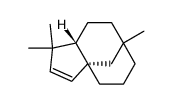 CAS#:469-92-1
CAS#:469-92-1![(1R,2S,7S,9R)-2,6,10,10-tetramethyltricyclo[7.2.0.02,7]undec-5-ene structure](https://image.chemsrc.com/caspic/108/31887-51-1.png) CAS#:31887-51-1
CAS#:31887-51-1![(-)-ALPHA-[1-(DIBUTYLAMINO)ETHYL]BENZYLALCOHOL structure](https://image.chemsrc.com/caspic/256/4545-68-0.png) CAS#:4545-68-0
CAS#:4545-68-0 CAS#:6753-98-6
CAS#:6753-98-6 CAS#:95-13-6
CAS#:95-13-6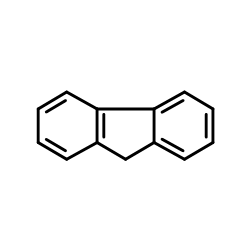 CAS#:86-73-7
CAS#:86-73-7![4,11,11-trimethyl-8-methylidene-5-nitro-4-nitrosobicyclo[7.2.0]undecane structure](https://image.chemsrc.com/caspic/304/28834-17-5.png) CAS#:28834-17-5
CAS#:28834-17-5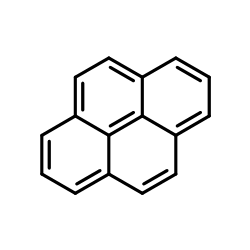 CAS#:129-00-0
CAS#:129-00-0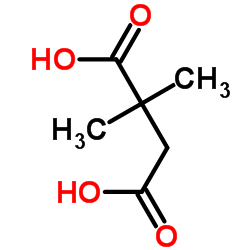 CAS#:597-43-3
CAS#:597-43-3
